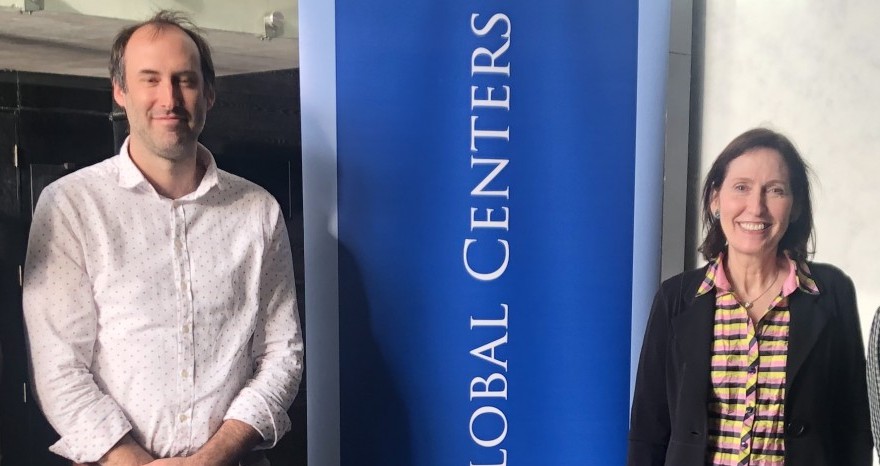Columbia’s Gould: Media Plays Key Role in Adolescent Suicide Prevention

The way media reports suicide cases can have a significant effect on adolescent suicide contagion or prevention, Madelyn Gould, Irving Philips Professor of Epidemiology in Psychiatry at Columbia University’s Vagelos College of Physicians and Surgeons, said during her visit to Chile at end-October.
Gould was invited to Chile in the second of the four-part Global Mental Health Series, sponsored by the Santiago Center, the Millennial Institute for Depression and Personality Research (MIDAP) and Universidad Católica’s office of the Vice-Provost for Research. The series - featuring Columbia University experts focusing on mental health issues - was inaugurated in early July by Lena Verdeli, Founder and Director of the Global Mental Health Lab and Associate Professor of Clinical Psychology at Teachers College.
During her visit, Gould – who participated in the construction of the national suicide prevention program in the United States - met with Paulina del Río, president and co-founder of Fundación José Ignacio, a nonprofit whose main goal is to help prevent suicide from a community-based perspective. The conversation focused on best practices regarding suicide hotlines and the role of "gatekeeper," or the person on the line who helps the caller in a suicide crisis. The main goal is to first help the patient focus on the reasons for living, while recognizing how bad they may feel, to then encourage the patient to seek face-to-face and therapeutic help. Both agreed that the great challenges that foundations face is volunteer training and fundraising to operate.
She also connected with a group of psychiatrists and psychologists of the neuropsychiatric foundation Nepsis to present "The Spread of Suicide and Possible Ways to Contain It," addressing the significant role played by the media and the way in which they report suicide cases in the behavior of the population in this regard. Gould discussed the concept of suicide clusters, when several cases occur in the same geographical area. This may occur if the media is not careful about how and what is reported in a suicide case.
Her main recommendations for media to report on suicide include:
- Not to glamorize or romanticize suicide.
- Present help-seeking as a useful tool and include resources such as hotlines, text lines and other online crisis intervention technologies for those in need. In no case should suicide be seen as a way to solve problems.
- Address mental illness and show examples of people that found alternatives to suicide.
- Refrain from making graphic depictions of suicide.
The effect of media reports on suicide cases is one of the main topics Gould has researched for more than 35 years, particularly in evaluating youth suicide prevention and intervention. It is crucial to understanding that exposure to suicidal peers, suicidal clusters and media can affect suicide decision-making processes. On the other hand, giving more attention to suicidal individuals’ adoption of coping strategies can be associated with a decrease in suicide rates.
During her time in Chile, Gould also met with Matías Irarrázaval, Head of the Suicide Prevention team at the Chilean Health Ministry’s Department of Mental Health, as well as with Alex Behn, Research Director at MIDAP.
Suicide is the second cause of death in Chilean youth aged 15-29 years, and experts have sounded the alarm bells that the suicide rate for people in this age group is rising.